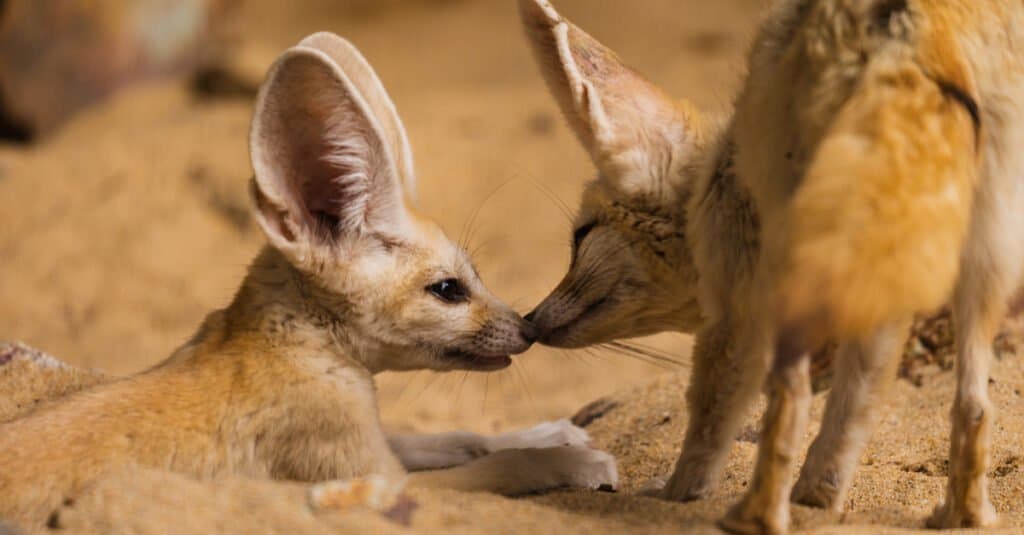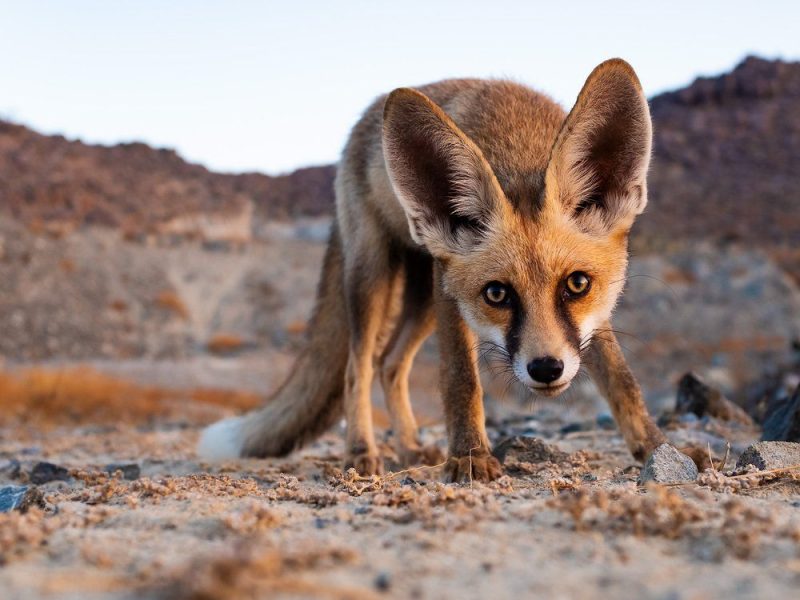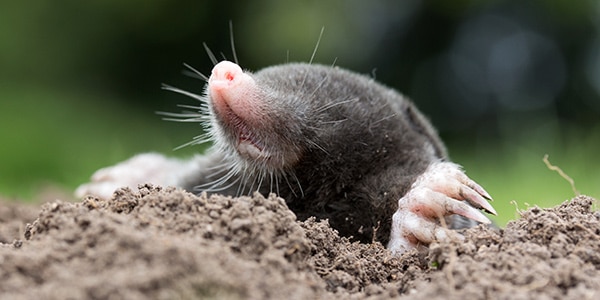Tiniest Fox: Fennec Fox
Everyone knows of foxes, but have you ever heard of fennec foxes? These are the tiniest foxes that don’t relate to a normal fox appearance. They have massive ears, which we will uncover in some time what’s the underlying benefits behind it. Usually, they have sandy-colored fur, which makes them suitable for arid habitats.
Fennec fox is native to the Sahara desert of North America but can be found in some other locations, too, which we will uncover a bit later. They possess an amazing sense and are generally nocturnal, which makes them excellent hunters during the night. But this is only a bit about them.
Carry along with us to know everything from their lifestyle to their family life and whether these cuties are good to keep as a pet or not.
Fennec Fox: An Overview
Fennec Fox, scientifically known as the Vulpes Zerda, are the tiniest known fox. They are mostly known for their unique appearance and boast many characteristics. Fennec fox is generally found in hot and arid regions, but what makes it suitable for surviving in such conditions is its adaptability. Want to know more?
Here is the list that will enlighten you on fennec fox nature, behavior, habitat, and other features.
1. Physical Characteristics

- Size: As said, the fennec fox is the smallest of all living fox species. They have an average length of 9 to 16 inches and a shoulder height of about 8 inches.
- Weight: Usually, fennec fox species weigh between 1.5 to 3.5 pounds.
- Coat: Fennec Fox boasts of a Sandy or pale yellow color dense fur. Their fur is soft and thick, and as said, it works as an insulation that protects them against both the heat of the sun and the cold desert nights.
- Ears: Fennec Fox is mostly known for their large bat-like ears, almost half their body size. Their ear length is anywhere between 4 to 6 inches and are of great use for them. Gradually, it helps them to dissipate heat and further contributes well to detecting their prey and the predators.
2. Areas and Habitat
Fennec Fox is commonly found in North Africa and the Sahara desert. Further, they are seen in countries like Algeria, Tunisia, Morocco, Libya, Egypt, Sudan and Niger. Their preferred habitat or the area they like the most to live in includes arid and sandy deserts. They dig burrows in sand for sheltering purposes, which are quite large and have multiple entry points.
3. Behavior and Lifestyle
- The Fennec fox animal is nocturnal. This means they are most active at dawn or night, i.e., when the atmosphere faces low-light conditions. Usually, the fennec fox sleeps or gets into its burrows during the daytime.
- These are counted among the highly social animals often found in small groups or with their families. This group usually encompasses a breeding pair that is a male and female fennec fox with their offspring.
- Phoenix foxes are omnivores; that is, they depend on both food and animals for their survival. E.g., small mammals, insects, birds, fruit, and plant matter.
- Adding to their lifestyle, they are mostly known for their ability to survive in harsh desert conditions with very few or negligible access to water. They mostly get the water part from the food they eat.
4. Reproduction

- Feene Fox breeds once a year with a litter size of 2 to 5 kits.
- Generally, the fennec female fox gives birth to the young ones in the burrow, and both parents are involved in raising the offspring. The baby fennec foxes are born blind and helpless but grow rapidly.
5. Lifespan
The lifespan of fennec foxes generally varies from 5 to 10 years. However, they can live longer than that, up to 12- 14 years or even more, if they get proper food and environmental support.
Family Life of Fennec Fox
As said, fennec foxes are very social, and their family life is quite interesting. The points listed below will enlighten you on the same.
1. Group Structure
Fennec foxes are generally found living in small and closed family groups, which are frequently called clans or packs. The Sahara fox group usually consists of a breeding pair that is a male and female phoenix Fox and their offspring.
2. Monogamous Breeding Pairs

Fennec foxes are also popular because of their nature to be monogamous. This means that a single breeding male and female form a strong bond, which is maintained for life. However, some flexibility exists, and new pairs can be formed if one mate dies.
3. Parental Care
Unlike many animals, fennec foxes are good parents; males and females are actively involved in parenting the offspring. Usually, the female fennec fox gives birth in the family burrow, and the offspring vary from 2 to 5 kits. The role of the male fennec fox is to care for and protect the baby foxes.
4. Kits Nourishment
The offspring, or the baby fennec foxes, are born blind and helpless. In the early period, they depended on their parents for food and survival. The female fennec fox provides milk to its young ones. The male fennec fox contributes by bringing food, especially during the birth week when the female remains close to the burrow.
5. Communication
Fennec Fox family members communicate among themselves through a wide range of vocalization, body language, and scent markings. The vocalization mentioned includes barks, whines, and purrs, which are often used for being in touch, work as a sign of danger, and other social interactions.
How is Fennec Fox as a Pet?

No doubt, fennec foxes are adorable, but making them pets isn’t a good choice. First and foremost, it’s illegal to own without any special permit. Even if you get a permit, it’s hard to meet the specialized needs of these small and nocturnal foxes, which are mostly suitable for arid regions. They are highly active and, hence, require more space to roam around and dig.
Adding on, they are nocturnal, which means they are active at night, which can be disruptive for you as a human. Fennec foxes are omnivores and, hence, require a diet that contains both plants and animals, so fulfilling their eating needs will be hard, too.
Some Amazing & Unknown Facts About Fennec Fox
- Fennec Foxes are the smallest known species of foxes, which, on average, measure only 8 inches in height and weigh around 2 to 3 pounds.
- Though these foxes are the smallest, surprisingly, they can jump as much as 2 feet high and 4 feet forward when running to catch their prey or escape a predator.
- They boast of the largest ear concerning the body size of any known animal. Further, they have multipurpose ears, which not only save them from the scorching heat of the desert but also make them aware of any predators or prey around.
- Fennec foxes have extra fur on their feet, which helps them to live on the hot sand comfortably. Further, the desert isn’t always hot; the temperature falls incredibly at night, and this extra fur on the feet helps stay warm.
- Fennec foxes have a dedicated family life. Usually, male and female foxes live together for a lifetime, producing 2-5 kids annually. When a female fox is gestation, the male brings food and protects it. Pups are weaned after 2 months from birth.
- Fennec Fox boasts outstanding communication skills, generally because they live in large family groups or are socially active. For communication, they use a wide range of vocalization methods that include sounds like squeaks, whines, shrieks, and purrs.
- Fennec Fox eats anything for its survival. This means they will take in anything they find in the wild. For example, reptiles, insects, and rodents like rats and lizards. Further, they may consume plant leaves, roots, and fruits.
- These tiny foxes can breathe as much as 690 times per minute, but this generally happens when the heat rises and they start panting. Their average breathing rate is around 24 breaths per minute.
- Fennec Fox doesn’t need to drink water for its survival as its water intake capacity is completed by nearly 100% when it eats leaves, roots, fruits, lizards, and insects like grasshoppers.
- Fennec foxes are nocturnal; that is, they are most active during the night. What they do during the day is to remain in the caves, which further helps them to refrain from the heat.
- Fennec Fox’s feet are of great help. They can run 20 miles per hour. Further, it helps them to dig up to 20 feet deep, which in turn is an escape from their natural Predators like eagles and owls.
Conservation of Fennec Fox
The fennec foxes are still not listed as an endangered species by the IUCN, but research says there have been instances of their population diminishing. However, the good part is that measures have been taken to conserve fennec fox. The listed points below will make you aware of the same.
1. Habitat Protection
Fennec Foxes are frequently found in arid regions, including the Sahara desert of Africa. Conservation organizations and governments should establish national parks or manage their natural habitat to protect them.
2. Anti-Poaching Measures
Many times, fennec foxes have been found hunted for their fur or to keep them as pets or sell them to tourists, which is a great concern for their species. Anti-poaching measures and legal enforcement is the best measure to prevent this illegal hunting and trading of fennec foxes.
3. Research and Monitoring
Though IUCN frequently checks for diminished population, other monitoring programs are necessary, which will help understand the fennec fox population, their behavior, and the threat they are facing. Further, this will help to make informed decisions on protecting these tiny foxes.
Foxes Similar to Fennec Fox
1. Coyote

They aren’t the fox but seem like cousins to fennec foxes, having a lot of things in common. Coyotes are widely popular desert dogs in the US. They can survive in several environments but handle surviving in the desert pretty well. Similar to the fennec fox, the Coyote is also dedicated to the family and is highly social. They live in groups and make burrows to care for their offspring. Further, just like the fennec fox, the Coyote also eats everything like rodents, reptiles, and plants, being an omnivore.
2. Arabian Red Fox

Though the Arabian Red Fox is a part of the global Red Fox family, they boast many characteristics that make them adaptable to surviving in the Arabian desert. They have a similar appearance to fennec foxes; they are small, have light-colored dense coats, and big ears that are multi-functional. Adding on, just like fennec foxes and Coyotes, they eat plants and animals.
3. Gray Fox

Gray Fox is a species of fox that boasts of habitat, food, and some other features similar to the fennec fox. They are commonly found in the Rocky deserts of the southwest and other parts of the United States. What sets them apart from fennec foxes is their ability to climb trees, which helps overpower them when competing for food. Like any other foxes on the list, they are also omnivores; that is, they eat scavenged carrion, pine nuts, and small rodents.
4. San Joaquin Kit Fox

San Joaquin Kit Fox can be called a lookalike of the fennec foxes. These foxes are quite rare, having been found in Southern California only. Further, they are classified or counted as endangered species by the IUCN. Like the fennec fox, the San Joaquin Kit Fox also has pale and large ears and makes their shelter by digging in the ground. Adding on, they don’t need water separately; their water intake is completed by 100% from the food they eat, similar to Fennec Fox.
Conclusion
All in all, the fennec fox is the tiniest known species of fox that is common to hot and arid regions like the Sharara desert. What backs up their survival in such conditions is their surprising adaptability, mentioned above in detail. Fennec foxes are social and, hence, make a great family.
If you’re considering keeping them as a pet, refer above to the ifs and buts. They aren’t the only species of foxes residing in the desert; there are many, but human interference is posing a threat to their population. Conservation methods are mentioned in the article, which will greatly help. Hope the article aligns with your needs, providing you with the information you sought.
If you want any specific details, do comment below, and we’ll help with the same at the earliest.
Frequently Asked Questions
Is the Fennec Fox Becoming Extinct?
Though the fennec fox isn’t currently listed under or classified as an endangered species, its population is found to be diminishing due to habitat loss and the illegal pet trade. But the best part is measures have been taken to monitor and protect their population throughout.
What Makes the Fennec Fox Unique in The Animal Kingdom?
Well, there are many, but the foremost among them is their ears, which serve multiple functions. It helps them dissipate the heat, locate any prey underground or become aware of the predators around them, and lastly, communicate with other foxes through a wide range of vocalization.
What Does a Fennec Fox Eat for Its Survival?
Fennec foxes are omnivores, i.e., depend on plants and animals for survival. Their diet includes insects, small rodents, birds and their eggs, and other desert vegetation. They get water from the food they eat and the dew that forms in their dens during the cold desert nights.
Is a Fennec Fox a Good Pet?
It’s not recommended to keep fennec foxes as pets because of their specialized needs, and further, there are many legal restrictions in many areas. Adding on, they are wild animals, and caring for them properly can be a challenging task and might pose or be a call for threat.
How Do Fennec Foxes Survive in Desert Habitats?
Fennec foxes boast various adaptations, making them suitable to survive in the desert habitat. They have large ears to dissipate heat, they are nocturnal, hence avoid daytime heat, and dense fur works as insulation. Further, they have large paws to dig burrows, escaping from severe heat and predators.







